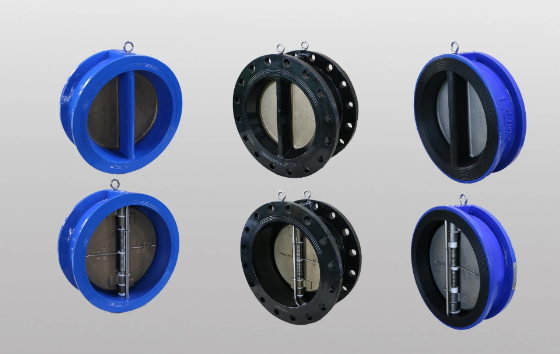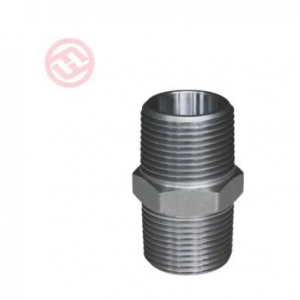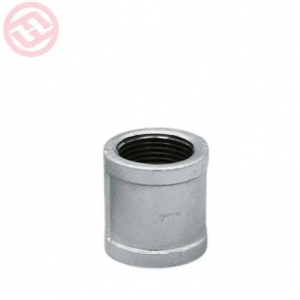CI butterfly valves are available in a range of sizes and pressure ratings to accommodate various industrial applications. The specific sizes and pressure ratings can vary depending on the manufacturer and the industry standards being followed.
However, here are some common sizes and pressure ratings for CI butterfly valves:
Sizes: CI butterfly valves are typically available in sizes ranging from 2 inches (50 mm) to 48 inches (1200 mm) in diameter. Smaller sizes are commonly used in residential, commercial, and light industrial applications, while larger sizes are more prevalent in heavy industrial settings.
Pressure Ratings: The pressure rating of a CI butterfly valve refers to the maximum pressure that the valve can withstand while maintaining proper functionality and leak-tight sealing. Pressure ratings for CI butterfly valves can vary, but here are some common pressure classes:
Class 125: This pressure class is suitable for low-pressure applications and is typically rated for pressures up to 125 psi (8.6 bar).
Class 150: Class 150 CI butterfly valves are designed for medium-pressure applications and can handle pressures up to 150 psi (10.3 bar).
Class 200: These valves are suitable for higher-pressure applications and can handle pressures up to 200 psi (13.8 bar).
Class 300: Class 300 CI butterfly valves are designed for even higher-pressure applications and can handle pressures up to 300 psi (20.7 bar).
It's important to consult the manufacturer's specifications, industry standards, and the specific requirements of the application to determine the appropriate size and pressure rating for a CI butterfly valve. Additionally, considering factors such as the fluid type, temperature, and flow conditions is crucial for selecting the right valve for a particular application.
What are some common fluid types that CI butterfly valves are compatible with?
CI butterfly valves are compatible with a wide range of fluid types, making them versatile for various applications across different industries.
Sizes: CI butterfly valves are typically available in sizes ranging from 2 inches (50 mm) to 48 inches (1200 mm) in diameter. Smaller sizes are commonly used in residential, commercial, and light industrial applications, while larger sizes are more prevalent in heavy industrial settings.
Pressure Ratings: The pressure rating of a CI butterfly valve refers to the maximum pressure that the valve can withstand while maintaining proper functionality and leak-tight sealing. Pressure ratings for CI butterfly valves can vary, but here are some common pressure classes:
Class 125: This pressure class is suitable for low-pressure applications and is typically rated for pressures up to 125 psi (8.6 bar).
Class 150: Class 150 CI butterfly valves are designed for medium-pressure applications and can handle pressures up to 150 psi (10.3 bar).
Class 200: These valves are suitable for higher-pressure applications and can handle pressures up to 200 psi (13.8 bar).
Class 300: Class 300 CI butterfly valves are designed for even higher-pressure applications and can handle pressures up to 300 psi (20.7 bar).
It's important to consult the manufacturer's specifications, industry standards, and the specific requirements of the application to determine the appropriate size and pressure rating for a CI butterfly valve. Additionally, considering factors such as the fluid type, temperature, and flow conditions is crucial for selecting the right valve for a particular application.
What are some common fluid types that CI butterfly valves are compatible with?
CI butterfly valves are compatible with a wide range of fluid types, making them versatile for various applications across different industries.
Here are some common fluid types that CI butterfly valves are compatible with:
Water: CI butterfly valves are commonly used for water applications, including water treatment plants, municipal water supply systems, irrigation systems, and HVAC systems. They can handle both clean water and wastewater.
Air and Gases: CI butterfly valves are suitable for controlling the flow of air and gases in HVAC systems, industrial processes, and pneumatic applications. They can handle compressed air, natural gas, propane, and other gases.
Chemicals: CI butterfly valves can be compatible with a wide range of chemicals, including acids, alkalis, solvents, and corrosive substances. The specific chemical compatibility may depend on the lining or coating applied to the valve or the use of specialized materials for enhanced chemical resistance.
Oil and Petroleum Products: CI butterfly valves can be used for the control of oil and petroleum products in refineries, oil terminals, pipelines, and storage facilities. They can handle different types of oils, including crude oil, gasoline, diesel, and lubricating oils.
Slurries and Suspensions: CI butterfly valves can be suitable for handling slurries and suspensions in industries such as mining, wastewater treatment, and chemical processing. ci butterfly valve Depending on the abrasive nature of the slurry, valves with hardened or coated discs may be preferred for extended durability.
Food and Beverage: CI butterfly valves can be used in the food and beverage industry for applications such as dairy processing, brewing, and beverage production. They can handle food-grade fluids like water, juices, milk, beer, and non-viscous food products.
Pharmaceuticals: CI butterfly valves can be compatible with certain pharmaceutical fluids and processes, particularly when specific hygiene requirements are met. In pharmaceutical applications, valves may be required to meet sanitary standards and have smooth, easy-to-clean surfaces.
It's important to consider the specific fluid characteristics, such as temperature, pressure, viscosity, and potential chemical reactivity, when selecting a CI butterfly valve for a particular fluid application. It's recommended to consult with valve manufacturers or industry professionals to ensure proper compatibility and performance of the valve with the specific fluid type.
Water: CI butterfly valves are commonly used for water applications, including water treatment plants, municipal water supply systems, irrigation systems, and HVAC systems. They can handle both clean water and wastewater.
Air and Gases: CI butterfly valves are suitable for controlling the flow of air and gases in HVAC systems, industrial processes, and pneumatic applications. They can handle compressed air, natural gas, propane, and other gases.
Chemicals: CI butterfly valves can be compatible with a wide range of chemicals, including acids, alkalis, solvents, and corrosive substances. The specific chemical compatibility may depend on the lining or coating applied to the valve or the use of specialized materials for enhanced chemical resistance.
Oil and Petroleum Products: CI butterfly valves can be used for the control of oil and petroleum products in refineries, oil terminals, pipelines, and storage facilities. They can handle different types of oils, including crude oil, gasoline, diesel, and lubricating oils.
Slurries and Suspensions: CI butterfly valves can be suitable for handling slurries and suspensions in industries such as mining, wastewater treatment, and chemical processing. ci butterfly valve Depending on the abrasive nature of the slurry, valves with hardened or coated discs may be preferred for extended durability.
Food and Beverage: CI butterfly valves can be used in the food and beverage industry for applications such as dairy processing, brewing, and beverage production. They can handle food-grade fluids like water, juices, milk, beer, and non-viscous food products.
Pharmaceuticals: CI butterfly valves can be compatible with certain pharmaceutical fluids and processes, particularly when specific hygiene requirements are met. In pharmaceutical applications, valves may be required to meet sanitary standards and have smooth, easy-to-clean surfaces.
It's important to consider the specific fluid characteristics, such as temperature, pressure, viscosity, and potential chemical reactivity, when selecting a CI butterfly valve for a particular fluid application. It's recommended to consult with valve manufacturers or industry professionals to ensure proper compatibility and performance of the valve with the specific fluid type.







